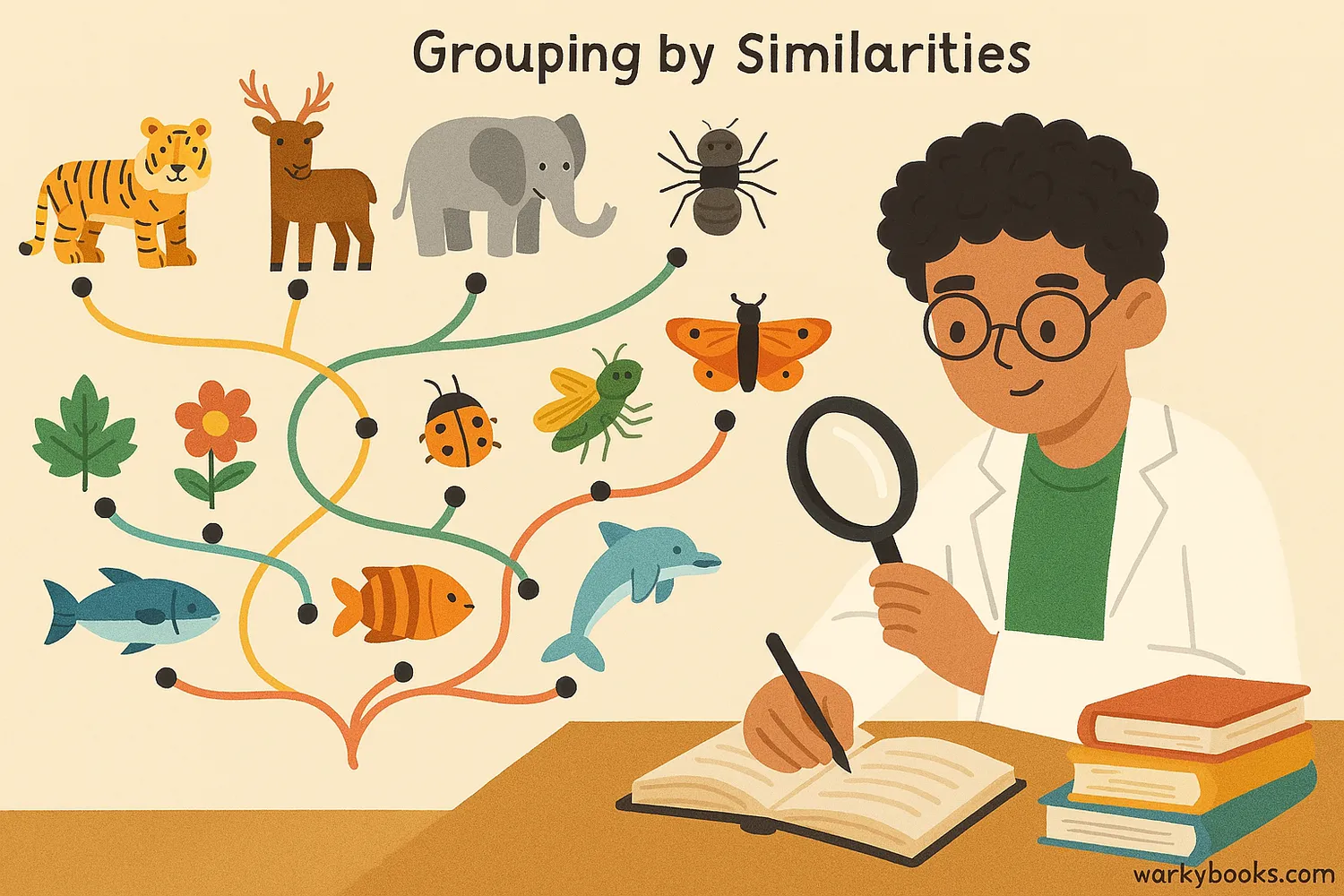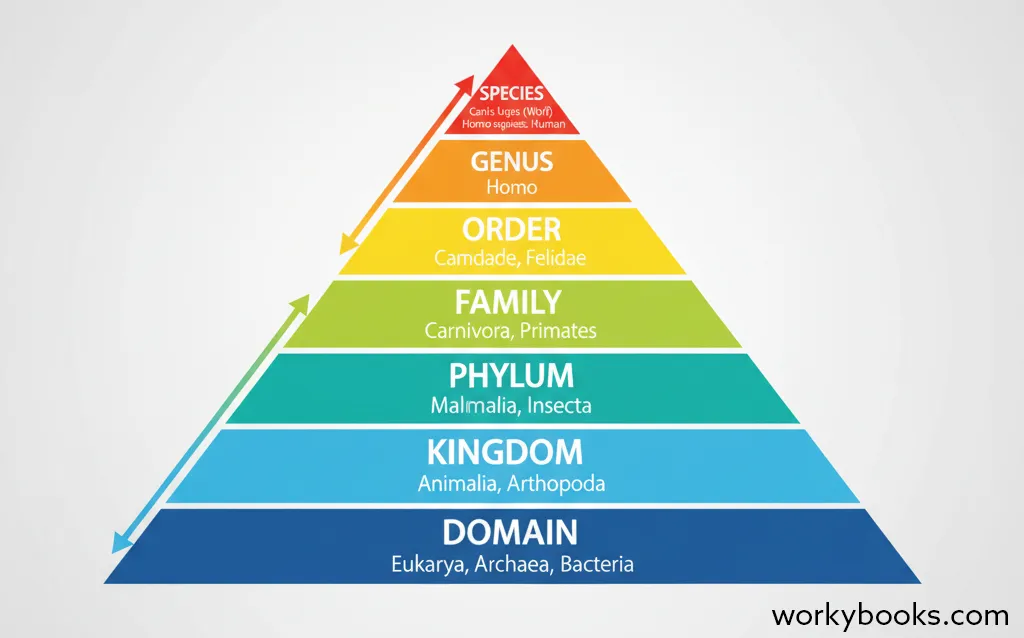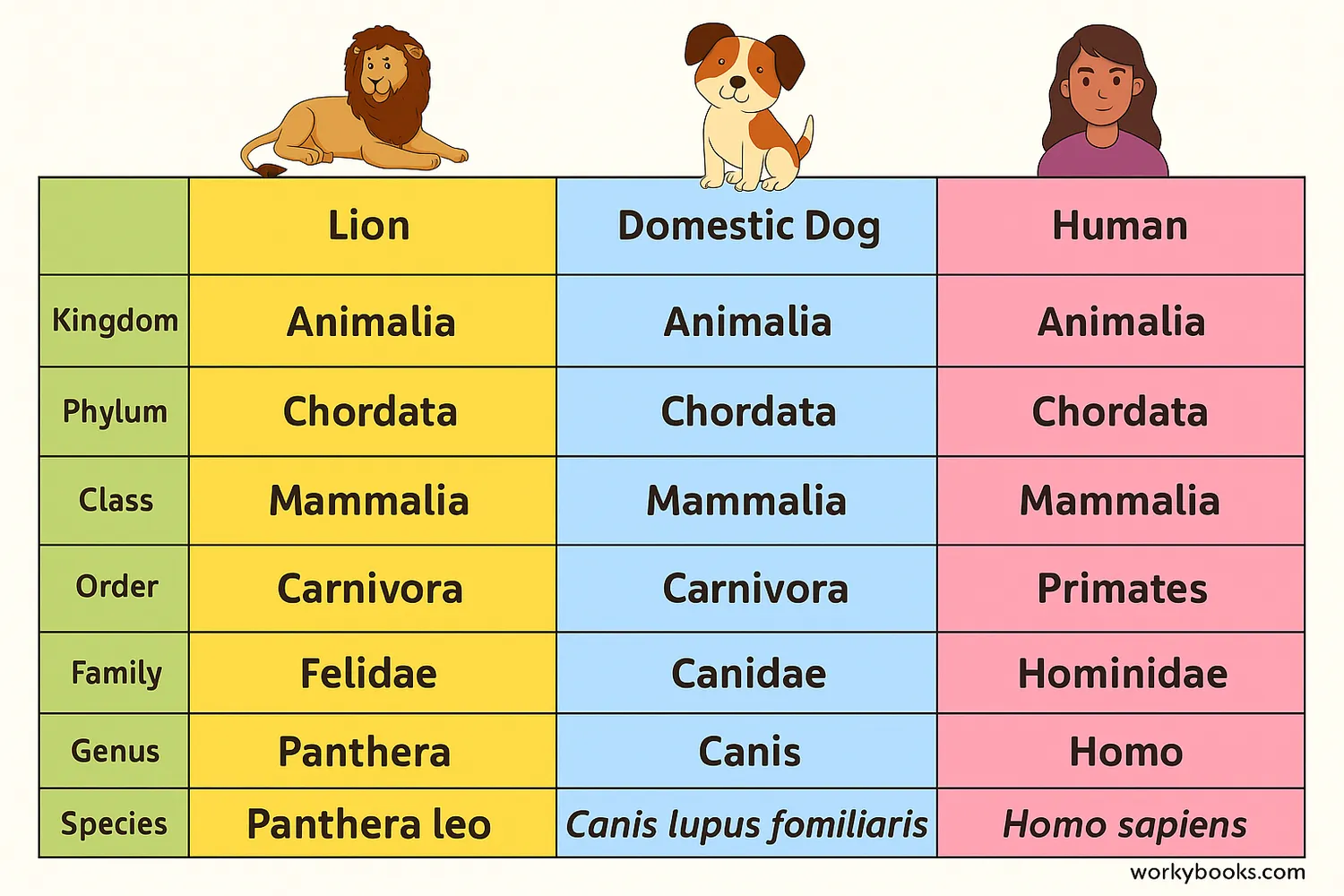Taxonomy - Definition, Examples, Quiz, FAQ, Trivia
Understanding How Scientists Classify Living Things
What is Taxonomy?

Taxonomy is the science of naming, describing, and classifying organisms. It's like a giant filing system for all living things! Scientists use taxonomy to organize the incredible diversity of life on Earth into groups based on their similarities.
Think about how you might organize your books or toys. You might group books by subject or toys by type. Scientists do something similar with living organisms, but they use very specific rules and characteristics.
Science Fact!
The word "taxonomy" comes from Greek words meaning "arrangement" and "method." It's basically the method we use to arrange living things into groups!
The Linnaean System

The taxonomy system we use today was developed by a Swedish scientist named Carolus Linnaeus in the 1700s. His system had two important features:
Hierarchical Classification
Organisms are grouped into categories that range from very broad to very specific
Binomial Nomenclature
Each species gets a two-part scientific name in Latin
Linnaeus's system was revolutionary because it provided a standard way to name and organize all living things. Before this, scientists in different countries used different names for the same organisms, which caused confusion.
Example: Homo sapiens (Humans)
Levels of Classification

Modern taxonomy uses eight main levels of classification. Think of these like a set of nesting boxes, where each level gets more specific:
| Level | Description | Human Example |
|---|---|---|
| Domain | The broadest category of life | Eukarya |
| Kingdom | Major groups within domains | Animalia |
| Phylum | Major groups within kingdoms | Chordata |
| Class | Groups within phyla | Mammalia |
| Order | Groups within classes | Primates |
| Family | Groups within orders | Hominidae |
| Genus | Groups within families | Homo |
| Species | The most specific category | sapiens |
A helpful way to remember these levels is with a mnemonic: Dear King Philip Came Over For Good Soup (Domain, Kingdom, Phylum, Class, Order, Family, Genus, Species).
Modern Taxonomy

While we still use Linnaeus's basic system, modern taxonomy has evolved with new technology. Today, scientists use:
DNA Analysis
Comparing genetic material to understand evolutionary relationships
Biochemistry
Studying proteins and other molecules to find similarities
Phylogenetics
Mapping the evolutionary history and relationships between species
These new tools have helped scientists discover relationships between organisms that we couldn't see just by looking at physical characteristics. For example, DNA evidence has shown that whales are more closely related to hippos than to fish, which changed how we classify them.
Three Domain System
Modern taxonomy recognizes three domains: Bacteria, Archaea, and Eukarya. This is based on fundamental differences in cellular structure and genetics.
Taxonomy Examples

Let's look at how some familiar organisms are classified:
Here are more examples of how different organisms are classified:
| Organism | Kingdom | Phylum | Class | Order | Family | Genus | Species |
|---|---|---|---|---|---|---|---|
| Lion | Animalia | Chordata | Mammalia | Carnivora | Felidae | Panthera | leo |
| Bald Eagle | Animalia | Chordata | Aves | Accipitriformes | Accipitridae | Haliaeetus | leucocephalus |
| Oak Tree | Plantae | Tracheophyta | Magnoliopsida | Fagales | Fagaceae | Quercus | robur |
Notice how closely related organisms share more classification levels. For example, lions and domestic cats share the same Kingdom, Phylum, Class, Order, and Family—they only differ at the Genus and Species levels.
Taxonomy Quiz
Test your knowledge with this quiz! Answer all 5 questions to see how much you've learned about taxonomy.
Frequently Asked Questions
Here are answers to some common questions about taxonomy:
Science Facts About Taxonomy
Discover some fascinating facts about taxonomy and biological classification!
Millions of Species
Scientists have identified about 1.7 million species, but estimate there may be between 5-30 million species on Earth! Insects make up the largest group of known species.
The Naming Father
Carolus Linnaeus named approximately 4,400 species of animals and 7,700 species of plants. He also classified humans as Homo sapiens, meaning "wise man."
DNA Barcoding
Modern taxonomists use "DNA barcoding"—analyzing a short genetic sequence from a standard part of the genome—to identify species, similar to how supermarket scanners use barcodes to identify products.
New Discoveries
Scientists discover about 15,000 new species each year! Many of these are insects, but new mammals, birds, and even large animals are still being found in unexplored areas like deep oceans and tropical rainforests.


